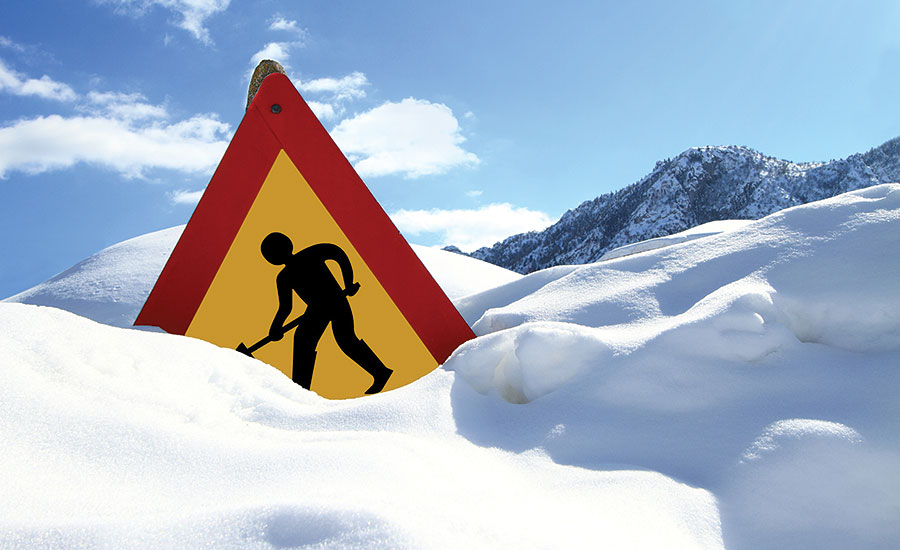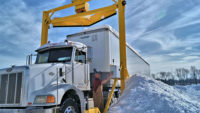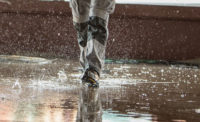With cold weather and snow arriving, you need to think about workers who spend time outdoors or in areas without heat. These workers are at risk of conditions such as cold stress, hypothermia and frostbite. When temperatures drop below normal, heat can rapidly leave the body, causing cold-related injuries and illness. In addition to illness and injury, snow and ice can cause many hazards for workers who drive on the job, must reach utility wires and poles to repair downed or damaged power lines and even to those walking outdoors, winter poses a greater risk of slipping and falling.
Cold stress
NIOSH provides information about cold stress on its website, which describes symptoms, first aid and recommendations for prevention. The following tips from the NIOSH website can help you and your workers avoid the dangers of cold stress.
- Schedule maintenance and repair jobs in cold areas for warmer months.
- Schedule cold jobs for the warmest part of the day.
- Reduce the physical demands of workers.
- Use relief workers or assign extra workers for long, demanding jobs.
- Provide warm liquids to workers.
- Provide warm areas for use during break periods.
- Monitor workers who are at risk of cold stress.
- Provide cold stress training.
Tips for workers
Workers should avoid exposure to extremely cold temperatures whenever possible and can follow these recommendations from the CDC and NIOSH to protect themselves from cold stress.
- Wear appropriate clothing.
- Wear several layers of loose clothing. Layering provides better insulation.
- Tight clothing reduces blood circulation. Warm blood needs to be circulated to the extremities.
- Choose clothing that won’t restrict movement, which could lead to a hazardous situation.
- Make sure to protect the ears, face, hands, and feet in extremely cold weather.
- Boots should be waterproof and insulated.
- Wear a hat; it will keep your whole body warmer.
- Move into warm locations during work breaks; limit the amount of time outside on extremely cold days.
- Carry cold weather gear, such as extra socks, gloves, hats, jacket, and blankets; a change of clothes; and a thermos of hot liquid.
- Include a thermometer and chemical hot packs in your first aid kit.
- Avoid touching cold metal surfaces with bare skin.
- Monitor your physical condition and that of your coworkers.
Winter hazards
There are many other weather-related hazards to watch out for in the colder months in addition to cold stress and illness such as:
- Winter driving
- Work zone traffic safety
- Stranded in a vehicle
- Shoveling snow
- Using powered equipment like snow blowers
- Clearing snow from roofs and working at heights
- Preventing slips on snow and ice
- Repairing downed or damaged power lines
- Working near downed or damaged power lines
- Removing downed trees
Winter driving
Although you can’t control road conditions, you can promote safe driving behavior by ensuring workers recognize the hazards of driving on snow- and ice- covered roads and are properly trained for driving in winter weather conditions. OSHA's Safe Winter Driving page offers many tips on how to prepare for a drive, protect yourself and prevent crashes on the road.
OSHA says employers should set and enforce driver safety policies. Employers should also implement an effective maintenance program for all vehicles and mechanized equipment that workers are required to operate. Employers should ensure properly trained workers' inspect company vehicles to determine if they are working properly.
Working at height
You should evaluate snow removal for hazards and plan how to do the work safely. Workers should be aware of the potential for unexpected hazards due to the weather conditions. Layers of ice can form as the environmental temperature drops, making surfaces even more slippery. A surface that is weighed down by snow must be inspected to determine if it is structurally safe for workers to stand on because it may be at risk of collapsing. Snow-covered rooftops can hide hazards such as skylights that workers can fall through. Electrical hazards may also exist from overhead power lines or snow removal equipment.
OSHA says employers can protect workers by using snow removal methods that do not involve workers going on roofs, when and where possible. Employers should determine the right type of equipment (ladders, aerial lifts, etc.) and PPE (personal fall arrest systems, non-slip safety boots, etc.) for the job and ensure that workers are trained on how to properly use them.
Preventing slips, trips and falls
You should clear walking surfaces of snow and ice, and use deicer as quickly as possible after a winter storm. In addition, OSHA recommends the following precautions to help reduce the possibility of injuries:
- Wear proper footwear when walking on snow or ice is unavoidable. A pair of insulated and water-resistant boots with good rubber treads is a must for walking during or after a winter storm. Keeping a pair of rubber overshoes with good treads which fit over your street shoes is a good idea during the winter months.
- Take short steps and walk at a slower pace so you can react quickly to a change in traction, when walking on an icy or snow-covered walkway.
Sources
1 https://www.cdc.gov/niosh/topics/coldstress/
2 https://www.osha.gov/Publications/safeDriving.html
3 https://www.osha.gov/dts/weather/winter_weather/hazards_precautions.html










